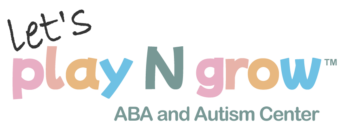If your child was recently diagnosed with autism, you’ve probably heard the term ABA therapy. Maybe your doctor mentioned it. Maybe it came up in a Facebook group. Maybe another parent told you it helped their child talk, play, or finally sleep through the night.
But what is ABA, really? Why do some people speak highly of it while others raise concerns? And how do you know if it’s right for your family?
Let’s walk through it together.
What is ABA?
ABA stands for Applied Behavior Analysis. It’s a science-based approach to understanding behavior and learning. In short, it helps us figure out what motivates a child, how they learn best, and how to teach new skills in a way that makes sense for them.
ABA breaks big goals into smaller, manageable steps and uses reinforcement to help the child succeed. Reinforcement just means that when a child does something we want to see more of, we follow it with something that is meaningful to them. That might be praise, a favorite toy, a break, a snack, or anything else they enjoy.
ABA can support all kinds of skills. Some families focus on communication. Others want to build independence with daily tasks like dressing, eating, or using the bathroom. Some are trying to reduce behaviors that make life harder, like hitting or meltdowns during transitions.
The most important thing to know is that ABA should be personalized. It should support your child’s growth in ways that actually matter to your family.
Why has ABA therapy received criticism?
This is a fair question and one many parents ask.
ABA has been around for a long time. Early versions of it often looked very different than what you’ll see today. Therapy sessions used to be more rigid, and there was a strong focus on compliance. Children were sometimes expected to sit still for long periods and complete tasks that didn’t always have meaning to them. Unfortunately, this led to negative experiences for some individuals.
The field has grown since then. Many providers have moved toward more compassionate, child-centered care that respects neurodiversity. There is more focus now on building trust, honoring the child’s voice, and using teaching strategies that are fun, natural, and meaningful.
That said, not all programs practice the same way. It’s important to ask questions and choose a provider that aligns with your values and your child’s needs.
What does ABA therapy look like today?
In a high-quality ABA program, sessions might include:
- A therapist joining your child on the floor and following their lead in play
- A focus on functional communication, like teaching your child to use words, pictures, or devices to ask for help or express feelings
- A gradual approach to building tolerance for daily routines like haircuts, mealtimes, or wearing a backpack
- Celebrating small wins like taking turns, trying a new food, or walking into a classroom with confidence
- Teaching safety skills like stopping when someone says stop or staying close in a parking lot
- Supporting your family with strategies you can use at home or out in the community
ABA should never feel like your child is being forced to act a certain way. It should feel like learning, growing, and making life a little easier—step by step.
What should you look for in an ABA therapy provider?
Not all ABA programs are the same, and it’s okay to be picky. Here are a few things to ask about when you’re exploring options.
How do they teach?
Are therapists following your child’s interests and making learning fun, or is the focus mostly on sitting at a table?
Are you included as a parent?
The best ABA programs include parents as partners. You should feel informed, heard, and supported.
Do the goals make sense?
Are they focused on building your child’s independence and communication? Are the goals meaningful to your daily life?
How do they talk about children and behavior?
Pay attention to the language a team uses. You want people who speak about your child with kindness, patience, and respect.
Is reinforcement done in a way that feels natural?
Reinforcement should never feel like bribery or pressure. It should feel joyful, encouraging, and respectful.
A final thought
ABA therapy should never feel like something being done to your child. It should feel like something being done with them, and for them. At its best, ABA helps your child learn skills that open doors—to relationships, to independence, and to a life filled with more ease and more connection.
You don’t have to know everything to get started. You just have to ask questions, trust your instincts, and find a team that sees your child the way you do—as someone full of potential.
Looking for more information?
These are some great places to start:

